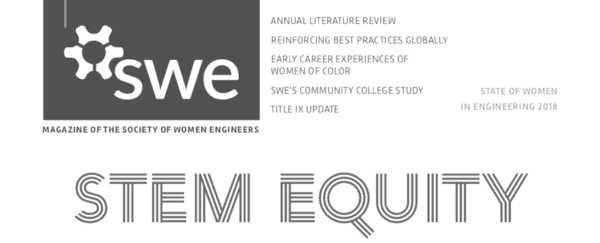The Department of Education (ED), headed by Betsy Devos, is now accepting public comments on the new proposed guidance on how to implement key aspects of Title IX. We encourage our members to register their individual comments to these proposed guidelines; for a reminder as to why it is important to comment, read our recent blog post on the matter.
ED will accept comments from the public through January 28, 2019. SWE members and the general public can submit a comment here.
In developing our response to these new guidelines, SWE keeps the two following points top of mind.
- Adequate protections under Title IX are critical to the persistence and ultimate success of women and girls in universities and K-12 schools.
- At SWE’s recent WE18 State of Women in Engineering panel we highlighted a recent report that over half of all women in engineering schools experience sexual harassment.
To that end, while we are still drafting our formal comments, we have identified the following concerns about proposed changes:
Concern #1: Narrowing the definition of knowledge of sexual harassment raises barrier to reporting for victims and disproportionately affects women and women of color. In the revised guidelines, ED makes clear in its proposal that it wants to narrow the definition of “sexual harassment” and align the definitions of “actual knowledge” and “deliberate indifference” with Supreme Court case law, (to this end, a college or university with “actual knowledge” of sexual harassment in an educational program or activity must respond in a manner that is not “deliberately indifferent”). This definition would, in effect, lower the bar for schools to respond to reported incidents of sexual harassment. Under the guidelines during the Obama administration, the Office of Civil Rights took the view that a college or university must respond when it had “constructive knowledge” of an incident, such as through reports made to employees.
The higher bar of “actual knowledge” before a school can be shown to be “deliberately indifferent” may submit victims to further traumatization just to establish a baseline of “actual knowledge” of reported harassment. This requirement would likely make victims submit a formal complaint before a school is required to respond. Studies (both formal and informal) frequently show that more women, and particularly women of color, feel subjected to harassment, which means that the method of reporting harassment is currently not sufficiently protecting them as it is. Increasing the barriers towards reporting harassment will only decrease the number of reports of harassment that are made. Access to the complaint and resolution process should be easier, not harder, and should not encourage knowledge avoidance on behalf of the institution.
Concern #2: Lessening burden on institutions and increasing burden on individuals will have a long-term impact on the ability for women to pursue justice for sexual harassment experienced. The proposed definition changes, as identified in the above, would, according to ED, substantially decrease the number of investigations into complaints of sexual misconduct (that are already underreported) and save institutions millions of dollars in litigation and compliance in the next decade alone. Helping institutions save money by encouraging them to be non-responsive is an inappropriate focus for the chief regulatory body over higher education in the United States.
In light of these concerns, SWE has the following recommended changes to the proposed guidelines:
- While SWE respects ED’s role to provide schools clear guidance and paths on how to conduct investigations, SWE believes the Department could also take advantage of recommendations provided by the research community on how to strengthen Title IX protections.
- ED should utilize recommendations in the report by the National Academies that coincided with SWE’s annual conference: Sexual Harassment of Women: Climate, Culture and Consequences in Academic Sciences, Engineering and Medicine.
- In the article, Dr. Agogino pointed out that organizational climate is, by far, the greatest predictor of the occurrence of sexual harassment. The two characteristics most associated with higher rates of sexual harassment are male-dominated gender ratios and leadership, and an organizational climate that communicates tolerance of sexual harassment.
- We affirm the following recommendations as described within this report:
i. RECOMMENDATION 4. Improve transparency and accountability to demonstrate
that institutions are investigating and holding people accountable. (a), (b).
ii. RECOMMENDATION 6: Provide support for the target. (Support targets of sexual harassment by providing alternative ways to access support services, record information about an incident, and report an incident without fear of retaliation.)
iii. RECOMMENDATION 8: Measure progress.
iv. RECOMMENDATION 9: Incentivize change.
v. RECOMMENDATION 11: Initiate legislative action. (a), (b), (e).
SWE is a long-time advocate for the full and legal implementation of Title IX and works to ensure that women, and those underrepresented in STEM, have equal access to protections under the law. SWE will thoroughly review the proposed rules and provide feedback prior to the deadline. We will publish our comments at the time of submission.
Author
-

SWE Blog provides up-to-date information and news about the Society and how our members are making a difference every day. You’ll find stories about SWE members, engineering, technology, and other STEM-related topics.






